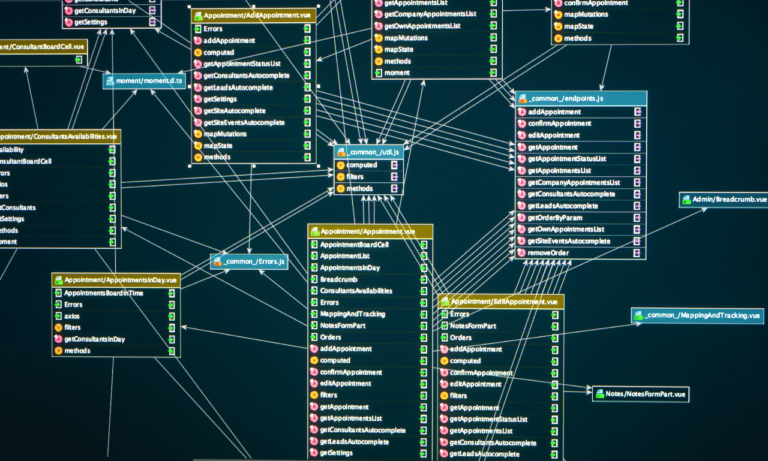Phone:
(+65)8319-0742
The shift from traditional educational methods towards more dynamic and student-centric approaches has brought Inquiry-Based Learning Support to the forefront of modern pedagogy. This guide highlights the transformative power of fostering a learning environment where Inquiry-Based Learning benefits both students and educators by promoting a culture of curiosity and self-directed discovery. Through effective Inquiry-Based Learning implementation, we unlock the potential for deep, meaningful engagement with the material, encouraging lifelong learning and intellectual growth.
Key Takeaways
- Understanding the core principles of Inquiry-Based Learning to support a student-driven educational experience.
- Recognizing the vast benefits of Inquiry-Based Learning for developing critical thinking and problem-solving skills.
- Adapting teaching strategies to facilitate a successful Inquiry-Based Learning implementation in diverse classroom settings.
- Encouraging a collaborative learning atmosphere that suits various learning styles and paces.
- Sustaining a continuous feedback loop between students and educators to refine the learning process.
- Evaluating the real-world applicability of Inquiry-Based Learning to prepare students for future challenges.
Understanding the Essentials of Inquiry-Based Learning
Inquiry-Based Learning (IBL) fosters a climate where students are encouraged to pose questions, investigate, and report findings, a stark contrast to traditional fact-centered approaches. At its core, IBL revolves around Inquiry-Based Learning techniques that engage learners in activities resembling the work of professional researchers and scholars. Effective IBL approaches tap into the natural curiosity of students and utilize Inquiry-Based Learning resources to help develop essential skills such as critical thinking and problem-solving.
One of the cornerstones of IBL is the diversity of inquiry models. Structured Inquiry and Open Inquiry epitomize the spectrum of student autonomy within the learning process. Structured Inquiry gives students a template for exploration, while Open Inquiry is a deeper dive, allowing them to design the entire investigative process from the ground up. A selection of well-chosen Inquiry-Based Learning examples depict these strategies across a range of disciplines, proving IBL’s adaptability and wide-ranging impact.
- Structured Inquiry: Students follow guided sessions where the teacher defines the question and research process.
- Open Inquiry: The inquirer is responsible for identifying the research question, method, and outcomes with minimal guidance.
Inquiry-Based Learning bridges the gap between theoretical knowledge and its application in real-world contexts. Its flexibility allows implementation across different educational levels, ensuring that students from elementary to higher education can experience the transformational power of self-directed learning.
| Inquiry Type | Level of Autonomy | Skill Focus |
|---|---|---|
| Structured Inquiry | Low | Understanding and application of given concepts |
| Guided Inquiry | Moderate | Application of concepts to new situations |
| Open Inquiry | High | Creative thinking and research design |
By nurturing an environment rich in Inquiry-Based Learning resources, educators encourage students to take control of their learning narratives. These resources range from academic journals and digital libraries to experimental kits and subject-specific tools. As students delve into these resources, they not only absorb knowledge but also learn the process of learning, which is a lifelong benefit.
The practice of Inquiry-Based Learning underscores the progression from mere knowledge recipients to active knowledge constructors. Interactive IBL units catalyze this transition, demonstrating that when students are placed at the helm of their educational voyage, their engagement levels surge, mirroring the professional learning experience of a researcher.
Key Benefits of Inquiry-Based Learning Techniques

Inquiry-Based Learning (IBL) is distinguished by its ability to transform the educational landscape, leveraging inquiry-based learning strategies that prepare students for an increasingly complex world. Below, we outline several core advantages associated with IBL that educators and learners are experiencing in classrooms around the globe.
Developing Critical Thinking and Problem-Solving
At the heart of Inquiry-Based Learning best practices is the enhancement of students’ critical thinking and problem-solving skills. IBL encourages learners to ask questions, think critically, and explore in a manner that leads to deep understanding. This engagement with subject matter not only bolsters intellectual development but also equips students with the skills necessary to approach and solve real-world problems with innovation and confidence.
Enhancing Student Engagement and Ownership of Learning
Another dimension of Inquiry-Based Learning benefits centers on student motivation and engagement. IBL strategies grant learners a more active role in their education, fostering a sense of ownership and personal investment in the learning process. As students navigate through their unique paths of inquiry, they become more motivated and take greater responsibility for their educational outcomes.
Promoting Real-World Connections and Applications
IBL is also celebrated for its ability to make learning relevant and meaningful by connecting classroom experiences with the outside world. The use of Inquiry-Based Learning tools and real-life scenarios makes education more engaging and applicable, teaching students to apply their knowledge to everyday situations. Such connections are invaluable, as they provide students with transferable skills that they can employ throughout their lives, well beyond the confines of school walls.
Adopting Inquiry-Based Learning examples and practices in educational settings can result in a profound impact on student achievement and personal growth. These benefits reiterate the significance of IBL as an effective approach to modern education.
Inquiry-Based Learning Support and Facilitation

The role of educators in Inquiry-Based Learning implementation has evolved to one where Inquiry-Based Learning Support takes center stage. It’s a shift from knowledge gatekeepers to learning enablers, championing a system that fosters student autonomy and inquiry. For effective support and facilitation, targeted strategies are necessary to cultivate a nurturing educational environment.
Inquiry-Based Learning implementation often employs scaffolding techniques to support students. This approach includes initial guidance and gradually diminishes as students gain confidence and control over their learning journey. The ultimate aim is to build a classroom dynamic that respects and encourages independent exploration driven by students’ innate curiosity.
- Creating an open-ended question culture â Encourage students to ask questions that lead to further inquiry.
- Fostering a collaborative learning environment â Use grouping strategies to promote peer learning and support.
- Providing access to diverse resources â Equip students with a range of materials to investigate topics of interest deeply.
| Inquiry Stage | Teacher Role | Student Role |
|---|---|---|
| Initiation | Introduce and guide the inquiry topic | Engage with the topic and begin formulating questions |
| Exploration | Facilitate access to resources and monitor progress | Conduct research and collaborate with peers |
| Deepening | Challenge students with higher-order questions | Develop and pursue more refined lines of inquiry |
| Conclusion | Assist in synthesizing findings and reflect on the process | Present findings and self-assess the inquiry process |
As students progress through these inquiry stages, the Inquiry-Based Learning Support provided by educators must adapt to accommodate their developing skills and autonomy. The gradual release of responsibility empowers students to take ownership of their learning, marking a significant milestone in successful Inquiry-Based Learning implementation.
Strategies for Implementing Inquiry-Based Learning in the Classroom

Incorporating Inquiry-Based Learning (IBL) into educational environments is a transformative initiative that cultivates a culture of curiosity and critical thinking. Integrating effective Inquiry-Based Learning strategies requires understanding varying levels of guidance and student autonomy, developing relevant materials, and leveraging assessment methods that support and enhance the IBL experience.
Structuring Inquiry Approaches: Structured to Free Inquiry
Beginning with a Structured Inquiry, educators lay the groundwork for students to familiarize themselves with inquiry processes and strategies. As the journey towards Inquiry-Based Learning implementation advances, students are gradually given more control over their learning, moving through stages from Controlled to Guided, and finally to Free Inquiry. Each of these stages represents a shift towards greater independence, with the ultimate goal of fostering adept learners capable of navigating their inquiries with confidence.
Designing Inquiry-Based Learning Materials and Activities
Creating materials that prompt inquisitive exploration is at the heart of Inquiry-Based Learning resources. A balanced mix of hands-on activities, reflections, and digital resources not only inspire high-level questioning but also immerse students in scenarios that replicate real-world challenges. From interactive simulations to collaborative projects, the design of these activities should align with the core Inquiry-Based Learning best practices, promoting a deeply personalized and engaging approach to education.
Assessment and Feedback in an Inquiry-Based Setting
Conventional assessments often fall short in evaluating the critical understanding intrinsic to IBL. Instead, assessments in this context should focus on the application and analytical depth of student inquiries. Providing Inquiry-Based Learning Support means giving feedback that is constructive and attuned to each student’s process and discoveries. This approach prioritizes ongoing learning and improvement, highlighting the Inquiry-Based Learning benefits of cultivating an environment that values reflection and deepened comprehension.
| IBL Stage | Student Autonomy | Teacher’s Role | Assessment Focus |
|---|---|---|---|
| Structured Inquiry | Low | Directing Learning | Understanding of Concepts |
| Controlled Inquiry | Moderate | Guiding Resource Use | Application of Knowledge |
| Guided Inquiry | High | Facilitating Research | Analysis and Synthesis |
| Free Inquiry | Full | Consulting and Supporting | Independent Thinking and Innovation |
In summary, the adoption of Inquiry-Based Learning strategies in the classroom is a dynamic and iterative process. It necessitates a shift from traditional teaching methods to a more supportive role that empowers students, along with the creation of resources and assessment frameworks designed to foster the investigative spirit at the core of IBL.
Inquiry-Based Learning Tools and Resources
Exploring the multitude of Inquiry-Based Learning resources can be an exciting journey for both educators and students. With the right Inquiry-Based Learning tools, the classroom becomes a dynamic environment where curiosity flourishes, and learning knows no bounds. The integration of innovative Inquiry-Based Learning techniques and collaboration platforms has been instrumental in transforming traditional educational settings into hubs of interactive and participatory learning.
Technological Tools to Support Inquiry
An array of technological advancements has greatly enhanced the capability for students to engage in deep inquiry. Educational software and virtual simulations are prime examples of Inquiry-Based Learning tools that make understanding complex concepts a more tangible and interactive process. These technologies invite a level of engagement and experimentation that is pivotal for mastering Inquiry-Based Learning strategies.
Collaborative Platforms for Idea Sharing and Discussion
The era of digital learning has brought forth a wave of collaborative platforms essential for effective Inquiry-Based Learning collaboration. These digital spaces, ranging from educational forums to social networking sites, are tailor-made for sharing insights, engaging in discussions, and collectively constructing knowledge, making them valuable Inquiry-Based Learning resources in the modern classroom.
Utilizing Libraries and Databases for Information Accessibility
Leveraging the extensive information available through libraries and databases is a core aspect of honing Inquiry-Based Learning techniques. With access to a wide selection of scholarly articles, books, and journals, students can conduct comprehensive research, which is the backbone of any Inquiry-Based Learning strategy. This treasure trove of information fosters academic independence and a more profound level of inquiry.
| Tool/Resource Type | Description | Benefits for Inquiry-Based Learning |
|---|---|---|
| Educational Software | Programs designed to simulate real-world problems and scenarios | Facilitates interactive learning and hands-on experience |
| Virtual Simulations | Interactive models allowing exploration of systems and processes | Enables experimentation in a risk-free environment |
| Online Forums | Platforms for open discussion and knowledge exchange | Promotes collaborative learning and peer-to-peer support |
| Educational Networking Sites | Social media tailored for educational purposes | Encourages collective problem-solving and idea sharing |
| Libraries and Databases | Comprehensive collections of informational resources | Supports in-depth research and development of critical thinking skills |
Challenges and Solutions in Inquiry-Based Learning Implementation
Embarking on Inquiry-Based Learning (IBL) can be both exhilarating and daunting, with several Inquiry-Based Learning challenges presenting themselves along the journey. One such hurdle is striking the right balance in structuring IBL environments, which can often feel at odds with customary classroom settings and schedules. Without clear directives, students may find themselves adrift in a sea of open-ended tasks, necessitating strategic Inquiry-Based Learning strategies to ensure successful navigation.
Adaptation and flexibility from educators are vital in overcoming these obstacles. This calls for ongoing professional development and a paradigm shift toward prioritizing the learning process over pre-set outcomes. Moreover, the harmonious blend of IBL and traditional educational models is key for a smooth transition. Providing proper scaffolding allows students and teachers to incrementally adjust to the inquiry-rich environment, gradually shifting responsibility from educator to learner.
- Identify clear objectives that align with IBL principles.
- Integrate essential questions to guide and stimulate student inquiry.
- Deploy strategic checkpoints and formative assessments to monitor progress.
- Encourage reflective practices that boost student metacognition.
The educational landscape is ripe with opportunities for those ready to embrace IBL. Armed with robust Inquiry-Based Learning strategies, educators can not only confront Inquiry-Based Learning challenges but also inspire a generation of autonomous, critical thinkers prepared to delve into the complexities of the world with confidence and curiosity.
Conclusion
In synthesizing the insights of this guide, we affirm that Inquiry-Based Learning (IBL) is a transformative educational model with profound benefits. By centering the student in a journey of knowledge construction, it not only addresses the demands of a complex, evolving educational landscape but also instills essential life-long learning skills. The power of IBL lies in its ability to align the learning process with real-world relevance, providing learners with a platform to link the theoretical underpinnings of the classroom with the practical challenges they will encounter post-education.
At the heart of IBL’s implementation is the creation of a learning culture that nurtures curiosity and prizes inquiry. Teachers, embracing the role of facilitators, gradually transfer the onus of learning to their students. This approach underscores the importance of was fostering an educational environment where students feel empowered to ask questions, investigate independently, and assess their findings critically. The careful and mindful execution of IBL strategies equips learners with autonomy, positively impacting motivation, engagement, and ultimately, educational outcomes.
Ultimately, the merit of IBL reflects in the cultivation of a robust skillset within young minds, preparing them for success in a multifaceted and dynamic global environment. As educators and students navigate the IBL terrain, the emphasis on student-focused learning, combined with the strategic application of resources and facilitative teaching, makes Inquiry-Based Learning a deeply impactful tool in the realm of education. The marriage between Inquiry-Based Learning benefits and its thoughtful implementation catalyzes a paradigm shift that can redefine the very essence of the educational experience for learners around the globe.
FAQ
What is Inquiry-Based Learning and how does it support students?
Inquiry-Based Learning (IBL) is a student-centered educational methodology that fosters curiosity, investigation, and exploration rather than rote memorization. IBL encourages students to ask questions, conduct research, and develop critical thinking and problem-solving skills. Support in IBL comes from teachers acting as facilitators, providing guidance and resources, while students direct their learning.
What techniques are used in Inquiry-Based Learning?
Techniques in Inquiry-Based Learning include high-level questioning, student-driven research and analysis, exploration of real-world problems, and reflection. These techniques encourage students to take a hands-on, active approach to their learning, ensuring a deeper understanding and practical application of knowledge.
What are the key benefits of Inquiry-Based Learning?
The key benefits of Inquiry-Based Learning include the development of critical thinking and problem-solving abilities, heightened student engagement and ownership of their learning journey, and the ability to draw connections to real-world scenarios, which can lead to better retention of knowledge and preparation for future challenges.
How can educators effectively implement Inquiry-Based Learning?
Effective implementation of Inquiry-Based Learning involves transitioning to facilitative teaching roles, designing IBL materials that encourage exploration, structuring the learning process incrementally from Structured to Free Inquiry, and utilizing methodologies that include real-world relevance and student-led questioning.
What strategies can help facilitate Inquiry-Based Learning?
Strategies include beginning with Structured Inquiry to provide a framework for students, then moving through Controlled and Guided Inquiry, before finally allowing students to undertake Free Inquiry. Additionally, designing appropriate materials, conducting proper assessment and feedback, and integrating technological tools and collaborative platforms can facilitate Inquiry-Based Learning.
What tools and resources support Inquiry-Based Learning?
Tools that support Inquiry-Based Learning range from technological resources like virtual simulations and educational software, to collaborative platforms for discussion and idea sharing, as well as libraries and databases for comprehensive research capabilities.
What challenges might educators face with Inquiry-Based Learning and how can they be addressed?
Challenges include the need for restructuring teaching methodologies, assessing open-ended learning processes, and adapting to a more student-centered approach. Solutions involve providing teachers with professional development opportunities, balancing IBL with traditional learning, and equipping students with the necessary resources and support for their Inquiry-Based Learning activities.
What Inquiry-Based Learning implementations are most effective in the classroom?
The most effective IBL implementations are those that allow for a combination of structured and student-directed learning. Best practices suggest starting with simpler inquiries that gradually move toward more complex, student-led projects over time. This scaffolding approach ensures a smooth transition for both students and teachers into the Inquiry-Based Learning model.
Source Links
- https://www.edutopia.org/article/bringing-inquiry-based-learning-into-your-class-trevor-mackenzie/
- https://www.structural-learning.com/post/a-teachers-guide-to-inquiry-based-learning
- https://lamslearning.medium.com/inquiry-based-learning-empowering-students-through-curiosity-and-exploration-1f5d55a91d7d

















